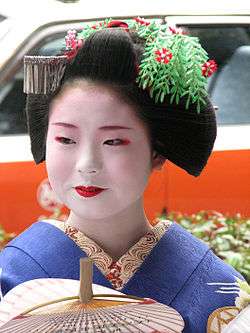Definify.com
Definition 2025
簪
簪
Translingual
Han character
簪 (radical 118 竹+12, 18 strokes, cangjie input 竹一山日 (HMUA), four-corner 88601, composition ⿱⺮朁)
References
- KangXi: page 900, character 28
- Dai Kanwa Jiten: character 26558
- Dae Jaweon: page 1326, character 14
- Hanyu Da Zidian: volume 5, page 3014, character 7
- Unihan data for U+7C2A
Chinese
|
simp. and trad. |
簪 | |
|---|---|---|
Glyph origin
| Historical forms of the character 簪
|
|---|
| Small seal script |
 |
| Characters in the same phonetic series (兓) (Zhengzhang, 2003) | |
|---|---|
| Old Chinese | |
| 簪 | *ʔsɯːm, *ʔsrɯm |
| 撍 | *ʔsluːm, *ʔsluːmʔ, *ʔsluːms, *ʔsrum |
| 鐕 | *ʔsluːm |
| 憯 | *sʰluːmʔ, *sʰlɯːmʔ |
| 噆 | *sʰluːmʔ, *ʔsluːb |
| 朁 | *sʰlɯːmʔ, *zlam |
| 蠶 | *zluːm |
| 蚕 | *zluːm, *hl'iːnʔ |
| 糣 | *sluːmʔ |
| 熸 | *ʔslom |
| 鬵 | *zlam, *zɯm, *ljɯm |
| 灊 | *zlam, *zɯm, *ljɯm |
| 潛 | *zlom, *zloms |
| 僭 | *ʔslɯːms |
| 兓 | *sl'ɯm |
| 嶜 | *zlum |
| 兂 | *ʔsrɯm |
| 譖 | *ʔsrums |
Pronunciation
- Mandarin
- (Standard Chinese, Beijing)+
- Pinyin:
- Zhuyin: ㄗㄢ
- Wade-Giles: tsan1
- Gwoyeu Romatzyh: tzan
- IPA (key): /t͡sa̠n⁵⁵/
- (Standard Chinese, Beijing)+
- Cantonese
- (Standard Cantonese, Guangzhou)+
- Jyutping: zaam1
- Yale: jāam
- Cantonese Pinyin: dzaam1
- IPA (key): /t͡sɑːm⁵⁵/
- (Standard Cantonese, Guangzhou)+
- Min Nan
- (Hokkien)
- Pe̍h-ōe-jī: chiam
- Tâi-lô: tsiam
- Phofsit Daibuun: ciafm
- IPA (Xiamen): /t͡ɕiam⁴⁴/
- IPA (Quanzhou): /t͡ɕiam³³/
- IPA (Zhangzhou): /t͡ɕiam⁴⁴/
- IPA (Taipei): /t͡ɕiam⁴⁴/
- IPA (Kaohsiung): /t͡ɕiam⁴⁴/
- (Hokkien)
| Rime | ||
|---|---|---|
| Character | 簪 | 簪 |
| Reading # | 1/2 | 2/2 |
| Initial (聲) | 莊 (18) | 精 (13) |
| Final (韻) | 侵 (140) | 覃 (159) |
| Tone (調) | Level (Ø) | Level (Ø) |
| Openness (開合) | Open | Open |
| Division (等) | Chongniu III | I |
| Fanqie | 側吟切 | 作含切 |
| Reconstructions | ||
| Zhengzhang Shangfang |
/t͡ʃˠiɪm/ | /t͡sʌm/ |
| Pan Wuyun |
/ʈ͡ʂᵚim/ | /t͡səm/ |
| Shao Rongfen |
/t͡ʃiem/ | /t͡sɒm/ |
| Edwin Pulleyblank |
/ʈ͡ʂjim/ | /t͡səm/ |
| Li Rong |
/t͡ʃjəm/ | /t͡sᴀm/ |
| Wang Li |
/t͡ʃĭĕm/ | /t͡sɒm/ |
| Bernard Karlgren |
/ʈ͡ʂi̯əm/ | /t͡săm/ |
| Expected Mandarin Reflex |
zhēn | zān |
| Baxter-Sagart system 1.1 (2014) | ||
|---|---|---|
| Character | 簪 | 簪 |
| Reading # | 1/2 | 2/2 |
| Modern Beijing (Pinyin) |
zān | zān |
| Middle Chinese |
‹ tsom › | ‹ tsrim › |
| Old Chinese |
/*Cə.tsˤ[ə]m/ | /*tsr[ə]m/ |
| English | hairpin | hairpin |
Notes for Old Chinese notations in the Baxter-Sagart system: * Parentheses "()" indicate uncertain presence; | ||
| Zhengzhang system (2003) | ||
|---|---|---|
| Character | 簪 | 簪 |
| Reading # | 1/2 | 2/2 |
| No. | 6694 | 6721 |
| Phonetic component |
兓 | 兓 |
| Rime group |
侵 | 侵 |
| Rime subdivision |
1 | 1 |
| Corresponding MC rime |
簪 | 旡 |
| Old Chinese |
/*ʔsɯːm/ | /*ʔsrɯm/ |
| Notes | 說文同兂俗體 | |
Definitions
簪
- This term needs a translation to English. Please help out and add a translation, then remove the text
{{rfdef}}.
Japanese
Kanji
Readings
- Goon: しん (shin), (historical) しむ (shimu)
- Kan’on: さん (san), (historical) さむ (samu)
- Kun: かんざし (kanzashi)
Etymology
/kamusaɕi/ → /kanzaɕi/
Originally a compound of 髪 (kamu, “hair, hair of the head”, Old Japanese combining form) + 挿し (sashi, “sticker-through (something that sticks through)”, the 連用形 (ren'yōkei, “continuative or stem form”) of verb 挿す sasu “to stick through, to insert”).[1][2]The sashi changes to zashi as an instance of rendaku (連濁).
Pronunciation
Alternative forms
Noun
簪 (hiragana かんざし, romaji kanzashi)
- a hairpin, particularly a fancy decorative hairpin used in Japanese women's hairstyles
Usage notes
This is most commonly spelled in kanji as 簪 or in kana as かんざし.
The alternative kanji spellings are attested, but seldom used in modern Japanese.
References
- ↑ 1988, 国語大辞典(新装版) (Kokugo Dai Jiten, Revised Edition) (in Japanese), Tōkyō: Shogakukan
- 1 2 2006, 大辞林 (Daijirin), Third Edition (in Japanese), Tōkyō: Sanseidō, ISBN 4-385-13905-9
- ↑ 1998, NHK日本語発音アクセント辞典 (NHK Japanese Pronunciation Accent Dictionary) (in Japanese), Tōkyō: NHK, ISBN 978-4-14-011112-3
Korean
Hanja
簪 • (jam) (hangeul 잠, revised jam, McCune-Reischauer cham, Yale cam)
- This term needs a translation to English. Please help out and add a translation, then remove the text
{{rfdef}}.
Vietnamese
Han character
簪 (trâm, trám, trắm)
- This term needs a translation to English. Please help out and add a translation, then remove the text
{{rfdef}}.
